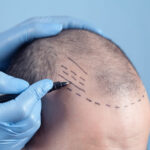Achieving natural-looking hair transplant in Riyadh, or anywhere for that matter, is the ultimate goal for individuals seeking hair restoration. It’s not just about having hair again; it’s about having hair that looks completely natural, as if it were never lost. This requires a combination of surgical skill, artistic vision, and a deep understanding of natural hair growth patterns. While technology plays a role, the human element – the surgeon’s expertise and aesthetic sense – remains paramount.
Key Elements for Natural-Looking Hair Transplant Results:
Several crucial elements contribute to achieving natural-looking hair transplant results in Riyadh:
-
The Surgeon’s Artistic Eye: This is perhaps the most critical factor. A natural-looking hairline is not created by simply placing grafts in a straight line. It requires an understanding of natural hairline variations, including subtle irregularities, changes in density, and the way hair flows and frames the face. The surgeon must have an artistic eye to create a hairline that complements the individual’s facial features, age, and overall aesthetic. In Riyadh, surgeons often work with diverse hair types and facial structures, requiring a keen understanding of these nuances.
-
Natural Hairline Design: The hairline is the most visible part of a hair transplant and, therefore, the most crucial for achieving a natural look. A natural hairline is not perfectly symmetrical or uniform. It has subtle peaks, valleys, and variations in density. The surgeon must carefully consider the individual’s facial shape, age, and natural hair growth patterns when designing the hairline. A hairline that is too straight, too dense, or placed too low will look unnatural.
-
Proper Graft Placement and Density: The density and distribution of the transplanted hair are essential for creating a natural appearance. The surgeon must carefully consider the density of the existing hair and replicate it in the transplanted area. Grafts should be placed at the correct angle and depth to mimic natural hair growth. The distribution of grafts should also be varied, with higher density in some areas and slightly lower density in others, to create a natural flow and avoid a “pluggy” or artificial look.
-
Follicular Unit Transplantation (FUT) vs. Follicular Unit Extraction (FUE): Both FUT and FUE can achieve natural-looking results when performed by a skilled surgeon. The choice of technique depends on the individual’s needs and preferences. FUE is increasingly popular in Riyadh due to its minimally invasive nature and lack of a linear scar. However, FUT can also be used to create natural-looking results, especially in cases requiring a large number of grafts. The surgeon should be able to recommend the most appropriate technique based on the individual’s circumstances.
-
Donor Hair Quality and Management: The quality of the donor hair plays a crucial role in the final outcome. Thick, healthy hair will provide better coverage and a more natural look than fine, sparse hair. The surgeon must carefully assess the donor area to ensure it has sufficient density and thickness to provide enough grafts for the desired coverage. Proper management of the donor area is also essential to minimize scarring and maintain its health for future procedures, if needed.
-
Blending with Existing Hair: The transplanted hair must blend seamlessly with the existing hair to create a natural look. This requires careful planning and execution by the surgeon. The hairline should be designed to transition smoothly into the existing hair, and the density of the transplanted hair should be adjusted accordingly. The surgeon must also consider the direction and flow of the existing hair when placing the grafts.
-
Patient Expectations and Communication: Open communication between the patient and the surgeon is crucial for achieving natural-looking results. The patient should have realistic expectations about what can be achieved with a hair transplant. The surgeon should take the time to listen to the patient’s concerns and goals and explain the procedure in detail. A shared understanding of the desired outcome is essential for patient satisfaction.
-
Post-Operative Care and Healing: Proper post-operative care is essential for the healing process and the survival of the transplanted grafts. Patients must follow the surgeon’s instructions carefully regarding medication, wound care, and activity restrictions. The healing process can take several months, and patients should be patient and understand that the final results will not be visible immediately.
-
Long-Term Hair Loss Management: Hair loss can continue to progress even after a hair transplant. Therefore, some patients might require additional treatments, such as medication or further procedures, to maintain their results over time. A long-term plan for managing hair loss is essential for preserving the natural look achieved through the transplant.
-
Technological Advancements: Advancements in hair transplant technology, such as robotic FUE and improved graft preservation techniques, can contribute to more natural-looking results. However, technology is only a tool, and the skill and artistry of the surgeon remain paramount.
Achieving natural-looking hair transplant results in Riyadh requires a combination of technical expertise, artistic vision, and a patient-centered approach. By choosing a reputable clinic with experienced and skilled surgeons, having realistic expectations, and understanding the process, individuals can significantly increase their chances of achieving a satisfying and natural-looking outcome. Thorough research and open communication with the surgeon are essential for a successful hair restoration journey.

